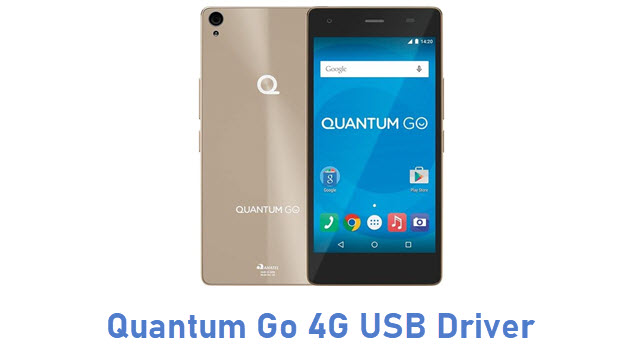- Quantum Laptops & Desktops Driver Download For Windows 10
- Quantum Laptops & Desktops Driver Download For Windows
- Quantum computers are still in the infancy of their development. The hardware and maintenance are expensive, and most systems are located in universities and research labs. The technology is advancing, though, and limited public access to some systems is available. Quantum simulators are software.
- The first few quantum computers are operational, and they are as bulky and clumsy as the early generations of mainframe computers. Those mainframes were water-cooled monstrosities that were ever so sensitive and required enormous amounts of power to operate. Prone to errors, they had to be continuously supervised.
Quantum computers use quantum bits, or qubits, which can simultaneously be any combination of zero and one. The difference means much faster processing speeds. Google (GOOGL) will now try to build. The new portable device is one of a range called SpinQ, aimed at schools and colleges. It is made by the Shenzhen SpinQ Technology, based in Shenzhen, China. This is not the company’s first quantum computer. Last year, it started selling a desktop quantum computer for around $50,000.
Quantum computers are still in the infancy of their development. The hardware and maintenance are expensive, and most systems are located in universities and research labs. The technology is advancing, though, and limited public access to some systems is available.
Quantum simulators are software programs that run on classical computers and make it possible to run and test quantum programs in an environment that predicts how qubits react to different operations.
Quantum hardware
A quantum computer has three primary parts: an area that houses the qubits, a method for transferring signals to the qubits, and a classical computer to run a program and send instructions.

- The quantum material used for qubits is fragile and highly sensitive to environmental interferences. For some methods of qubit storage, the unit that houses the qubits is kept at a temperature just above absolute zero to maximize their coherence. Other types of qubit housing use a vacuum chamber to help minimize vibrations and stabilize the qubits.
- Signals can be sent to the qubits using a variety of methods including microwaves, laser, and voltage.
Quantum computers face a multitude of challenges to operate correctly. Error correction in quantum computers is a significant issue, and scaling up (adding more qubits) increases the error rate. Because of these limitations, a quantum PC for your desktop is far in the future, but a commercially-viable lab-based quantum computer is closer.
Quantum simulators
Quantum Laptops & Desktops Driver Download For Windows 10
Quantum simulators that run on classical computers allow you to simulate the running of quantum algorithms on a quantum system. Microsoft’s Quantum Development Kit (QDK) includes a full-state vector simulator along with other specialized quantum simulators.
Topological qubit
Microsoft is developing a quantum computer based on topological qubits. A topological qubit is less impacted by changes in its environment, therefore reducing the degree of external error correction required.
Topological qubits feature increased stability and resistance to environmental noise, which means they can more readily scale and remain reliable longer.
Microsoft and quantum hardware partnerships
Microsoft is partnering with quantum hardware manufacturers IonQ, Honeywell, and QCI to make quantum computers accessible to developers in the future. Leveraging the Azure Quantum platform, developers can use Microsoft’s Quantum Development Kit (QDK) and Q# to write quantum programs and run them remotely.
Quantum computations
Performing computations on a quantum computer or quantum simulator follows a basic process: Sato port devices driver download windows 7.
- Access the qubits
- Initialize the qubits to the desired state
- Perform operations to transform the states of the qubits
- Measure the new states of the qubits

Initializing and transforming qubits is done using quantum operations (sometimes called quantum gates). Quantum operations are similar to logic operations in classical computing, such as AND, OR, NOT, and XOR. An operation can be as basic as flipping a qubit's state from 1 to 0 or entangling a pair of qubits, to using multiple operations in series to affect the probability of a superposed qubit collapsing one way or the other.
Note
The Q# libraries provide built-in operations that define complex combinations of lower-level quantum operations. You can use the library operations to transform qubits and to create more complex user-defined operations.
Measuring the result of the computation tells us an answer, but for some quantum algorithms, not necessarily the correct answer. Because the result of some quantum algorithms is based on the probability that was configured by the quantum operations, these computations are run multiple times to get a probability distribution and refine the accuracy of the results. Assurance that an operation returned a correct answer is known as quantum verification and is a significant challenge in quantum computing.
Summary
Quantum computing shares some of the same concepts as classical computing but adds a few new twists. Here are some key takeaways:
- Quantum hardware is expensive and fragile to work with, so quantum simulators are used to write and test programs.
- Both classical and quantum computers use logic operations (or gates) to prepare computations.
- Quantum computations return probabilities.
Advancements in quantum hardware and techniques is rapidly changing the field. Here are just a few of the current developments.
Quantum Laptops & Desktops Driver Download For Windows
Next steps
